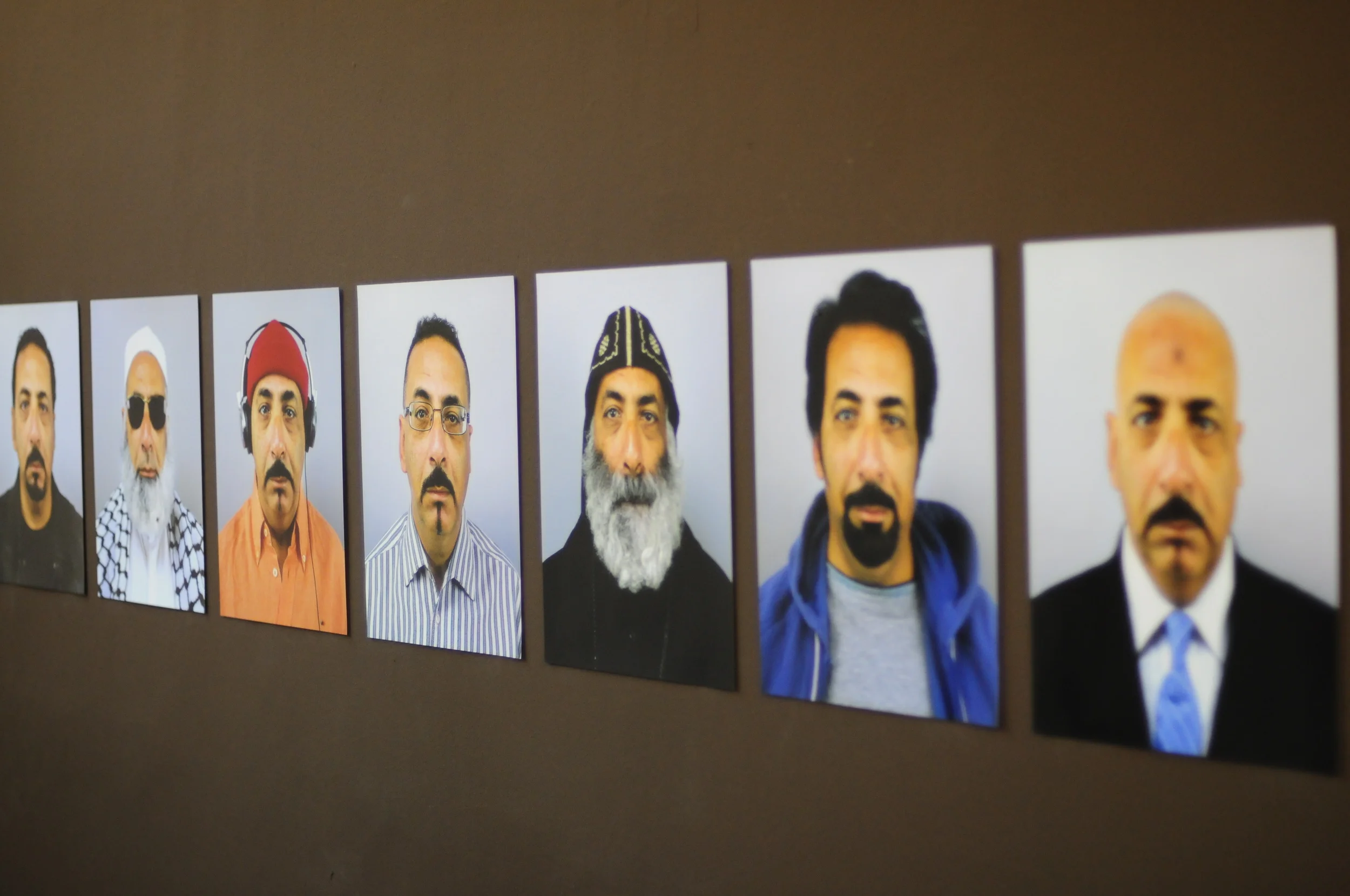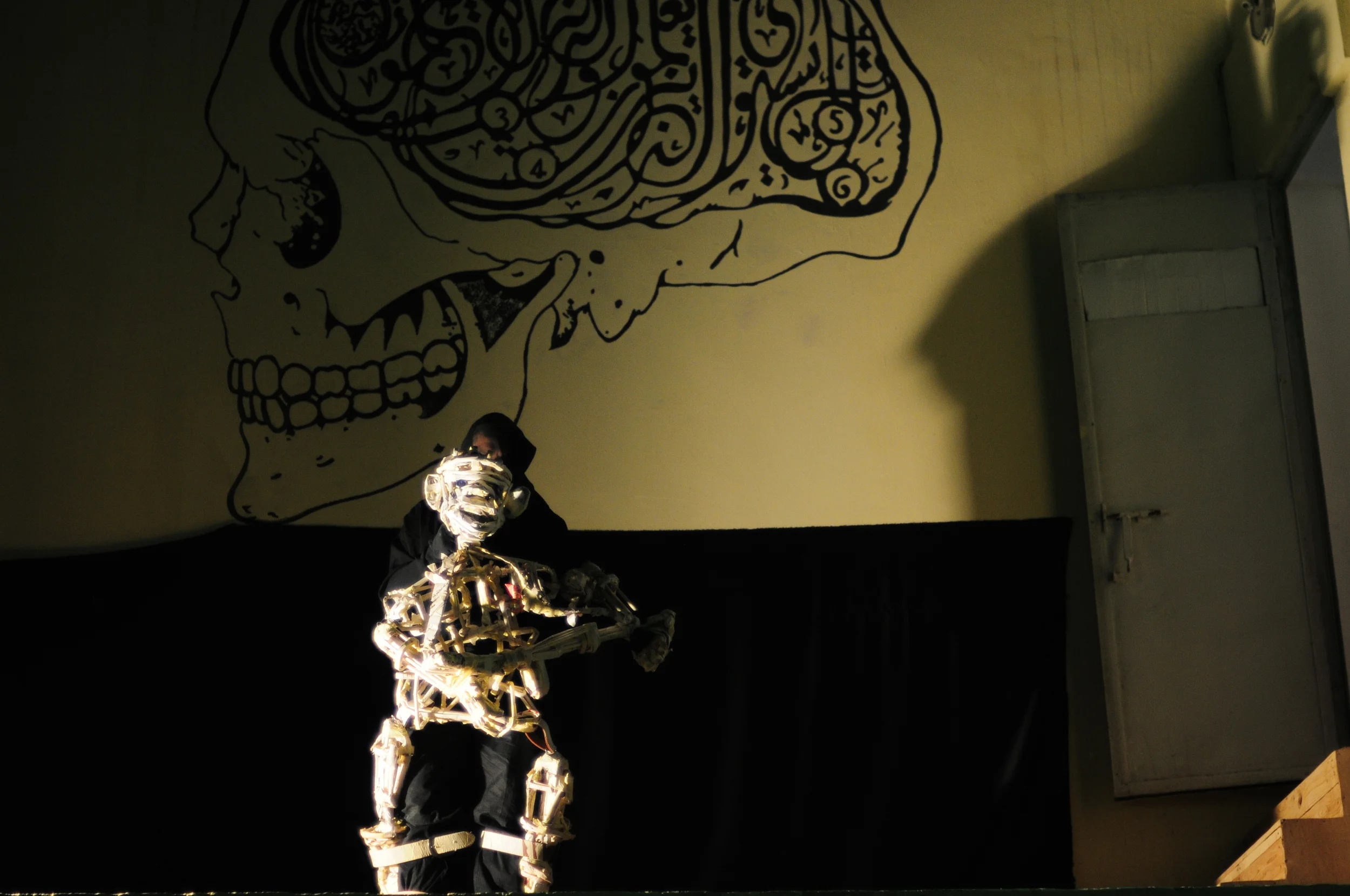






























Your Custom Text Here
FAMES: Family Vaudeville, DARB 1718, Cairo, Egypt December 2010 - January 2011
Artists: Nermine Ansari, Lotta Antonsson, Tobias Bernstrup, Nabil Boutros, Loulou Cherinet, Juan-Pedro Fabra Guemberena, Khaled Hafez, Bjørn-Kowalski Hansen, Goran Hassanpour, Carl-Michael von Hausswolff, Sabah Naim, Moataz Nasr, Hany Rashed, Hannu Räisä, Egill Sæbjörnsson.
Curator: Power Ekroth, co-curator: Juan-Pedro Fabra Guemberena
A lot of group exhibitions come together within a conceptual lasso that either is too tight and hence run the risk of suffocating the art, or instead way too loose. It is loose in order to be able to communicate with every one of the art works included that doesn't really communicate with each other in any obvious or interesting way, and hence run the opposite risk of not saying anything at all. Most exhibitions that come together has during its development undergone extreme compromise due to a lack of budget, spatial resources or a bad communication between curators and artists, curators and the institutions, artists and the institutions. In this case, the exhibition has been put together because of a sense of familiarity between the artists and curators, a passion for art and in spite of a zero-budget. The curators and artists have all been working together at one point with each other – however not all artists know each other.
The title is of course also a nod to the fact that the art world is a big circus and we are a traveling bunch of artists and curators that meet in different places all over the world, and also to the fact that we tend to become one big “family” in the art world, or a nomadic, traveling theater/circus. The artists chosen are indeed members of this family, but just like in Ludwig Wittgenstein's theory of “Family Resemblance”, one member of the family – or art work – is connected by a series of overlapping similarities to the other members of the same family, but no one feature is common to all of the members. The family that has gathered in Cairo may not have one common denominator – except for the family name of the exhibition thematics – but they are indeed connected by the way they approach their own game, the game of art.
The word "family" is derived from the meaning of “servants of a household” which in Roman times also included the servants and slaves, and the word etymologically stems from the word "fames", which in turn means "hunger". The members of a family shared the hunger and the meals together, regardless of their place in the hierarchy. In the “family” of this exhibition we all share the hunger for creating serious work with a playful, experimental approach and for dialog in the shape of an exhibition. Most likely we also share some sort of resembling pathology of the mind that had us becoming part of this nomadic circus of the art world.
To curate a show resembles when the circus director putting together a great show. There must be amusing moments, exciting moments, unexpected moments and amazing moments and they must have a certain pace or rhythm in order not to make the visitors bored or left uninterested. There must also be something for everyone, for the 3-year old and for grandma. The lion-tamer, for instance, cannot come on directly after the suspense of the trapeze artists show, instead one need to fill the gap with some clowns to enable a welcoming break between tensions. The circus as a metaphor for the exhibition is for us an interesting approach. But just like in any normal family there are different personalities here, some have great egos who wishes to be seen and heard all the time, and some are more subtle and use more delicate modes of being noticed. Some in this circus are buffoons who juggles and fool us, others are magicians who use the preconceptions and illusory tricks to cheat our senses and swindles the audience with superior and dark skills.
The circus is a nomadic family business, where its members adapt to every situation without ever giving up their own particular domain, their trait or characteristic quality. Somehow this applies very well to artists and exhibitions too, where works of art can put the viewer in suspense, in awe, have them thrilled, put in disgust, be put in a fantasy world where different laws apply and can make new dreams and fantasies commence and the possibility to even reflect on the “real” world with a different perspective. And, like the jester, the artist can say things that no-one else dares to.
FAMES: Family Vaudeville, DARB 1718, Cairo, Egypt December 2010 - January 2011
Artists: Nermine Ansari, Lotta Antonsson, Tobias Bernstrup, Nabil Boutros, Loulou Cherinet, Juan-Pedro Fabra Guemberena, Khaled Hafez, Bjørn-Kowalski Hansen, Goran Hassanpour, Carl-Michael von Hausswolff, Sabah Naim, Moataz Nasr, Hany Rashed, Hannu Räisä, Egill Sæbjörnsson.
Curator: Power Ekroth, co-curator: Juan-Pedro Fabra Guemberena
A lot of group exhibitions come together within a conceptual lasso that either is too tight and hence run the risk of suffocating the art, or instead way too loose. It is loose in order to be able to communicate with every one of the art works included that doesn't really communicate with each other in any obvious or interesting way, and hence run the opposite risk of not saying anything at all. Most exhibitions that come together has during its development undergone extreme compromise due to a lack of budget, spatial resources or a bad communication between curators and artists, curators and the institutions, artists and the institutions. In this case, the exhibition has been put together because of a sense of familiarity between the artists and curators, a passion for art and in spite of a zero-budget. The curators and artists have all been working together at one point with each other – however not all artists know each other.
The title is of course also a nod to the fact that the art world is a big circus and we are a traveling bunch of artists and curators that meet in different places all over the world, and also to the fact that we tend to become one big “family” in the art world, or a nomadic, traveling theater/circus. The artists chosen are indeed members of this family, but just like in Ludwig Wittgenstein's theory of “Family Resemblance”, one member of the family – or art work – is connected by a series of overlapping similarities to the other members of the same family, but no one feature is common to all of the members. The family that has gathered in Cairo may not have one common denominator – except for the family name of the exhibition thematics – but they are indeed connected by the way they approach their own game, the game of art.
The word "family" is derived from the meaning of “servants of a household” which in Roman times also included the servants and slaves, and the word etymologically stems from the word "fames", which in turn means "hunger". The members of a family shared the hunger and the meals together, regardless of their place in the hierarchy. In the “family” of this exhibition we all share the hunger for creating serious work with a playful, experimental approach and for dialog in the shape of an exhibition. Most likely we also share some sort of resembling pathology of the mind that had us becoming part of this nomadic circus of the art world.
To curate a show resembles when the circus director putting together a great show. There must be amusing moments, exciting moments, unexpected moments and amazing moments and they must have a certain pace or rhythm in order not to make the visitors bored or left uninterested. There must also be something for everyone, for the 3-year old and for grandma. The lion-tamer, for instance, cannot come on directly after the suspense of the trapeze artists show, instead one need to fill the gap with some clowns to enable a welcoming break between tensions. The circus as a metaphor for the exhibition is for us an interesting approach. But just like in any normal family there are different personalities here, some have great egos who wishes to be seen and heard all the time, and some are more subtle and use more delicate modes of being noticed. Some in this circus are buffoons who juggles and fool us, others are magicians who use the preconceptions and illusory tricks to cheat our senses and swindles the audience with superior and dark skills.
The circus is a nomadic family business, where its members adapt to every situation without ever giving up their own particular domain, their trait or characteristic quality. Somehow this applies very well to artists and exhibitions too, where works of art can put the viewer in suspense, in awe, have them thrilled, put in disgust, be put in a fantasy world where different laws apply and can make new dreams and fantasies commence and the possibility to even reflect on the “real” world with a different perspective. And, like the jester, the artist can say things that no-one else dares to.
Carl-Michael von Hausswolff and Judy in the Cobra Bar
Carl Michael von Hausswolff, Cobra Bar
Nabil Boutros
Goran Hassanpour
Hany Rashed
Nermine Ansari
Unidentified man infront of Juan-Pedro Fabra Guemberena's wall painting
Egill Sæbjörnsson
Khaled Hafez
Lotta Antonsson and Khaled Hafez
Sabah Naim
Bjørn-Kowalski Hansen
Hannu Räisä performing with his puppet during the opening
Moataz Nasr, Oxymoron